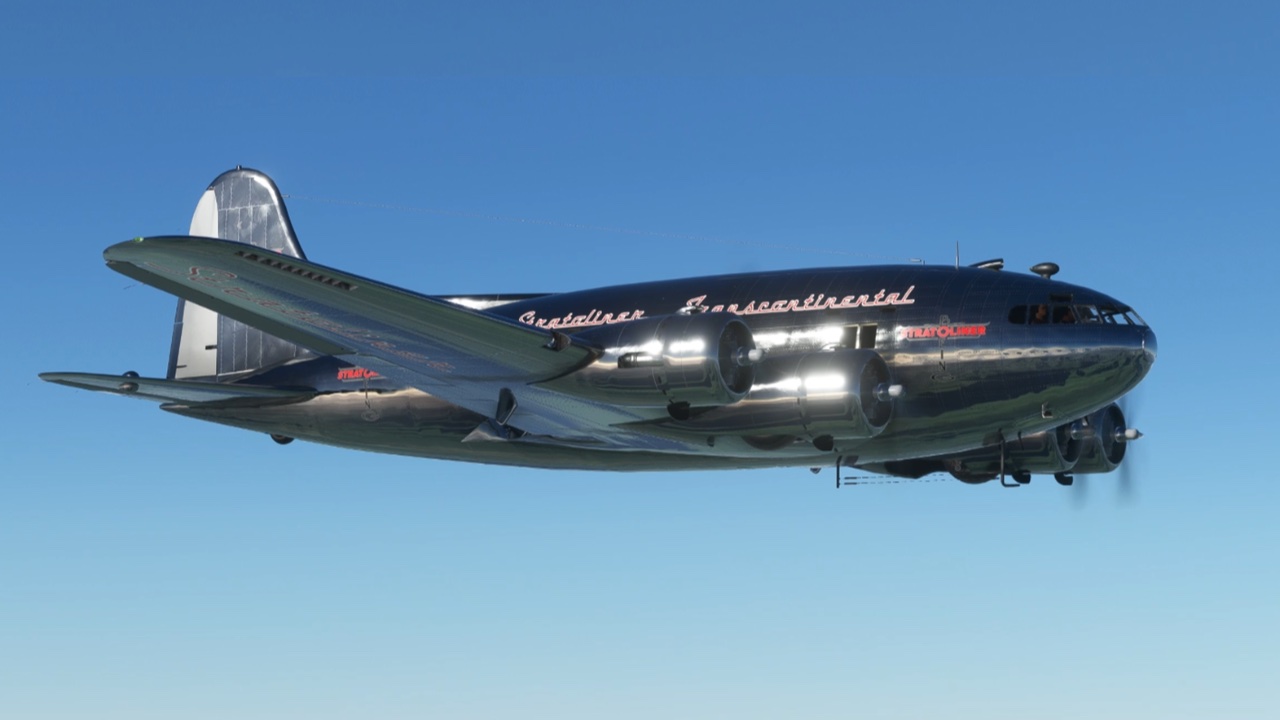– The mixture levers can no longer clip into the throttle levers.
– The aircraft is less maneuverable on the ground after performing a gear-up landing.
– The GPU cart no longer appears by default when starting Cold & Dark.
– Fixed an animation issue with the Heading Indicator.
– Fixed various issues with instrument lighting.
– Adjusted the engines’ RPM at idle.
– The engines will shutdown when fuel and oil are cutoff.
– The Sperry gyropilot works and “lives” more happily with the modern AP.
– Updated the cabin supercharging / pressure regulating system
– Adjusted the scale on the ammeters so that they show output only.
– Fixed the CDI on HUD’s HSI and cockpit’s VOR gauge so that they are now aligned.
– Fixed some VFX issues related to the wheels.
– Added an effect for dumping fuel.
– Fixed the Battery Selector lever so that the GPU and chocks do not appear when set to Flight.
– The HUD’s and cockpit’s tachometers are now aligned.
– Auto-Start now start Engines 2 and 4.
– The Pre-Start checklist can now be completed with Autocomplete.
– Revised the tooltips for the fuel selectors.
Built primarily with aluminum alloy, the 307 utilized stressed-skin engineering, where the metal exterior works in concert with the aircraft’s frame for strength, flexibility, and to maintain pressurization at altitude. The 307 could carry up to 33 passengers and five crew, including two pilots and a new type of aircraft personnel at the time, a flight engineer. The flight engineer was responsible for technical aspects of the aircraft’s operation, including cabin pressurization, power settings, and electrical components.
The Boeing 307 Stratoliner measures 38 feet, 7 inches in length, stands 20 feet, 9 inches tall, and has a wingspan of 107 feet, 3 inches. It is powered by four Wright GR-1820-G102A Cyclone radial engines that produce up to 1,100 horsepower each and turn 3-blade constant speed propellers. The 307 has a range of 1,300 miles, a service ceiling of 23,800 feet above sea level, a cruise speed of 222 miles per hour, and a top speed of 250 mph.

